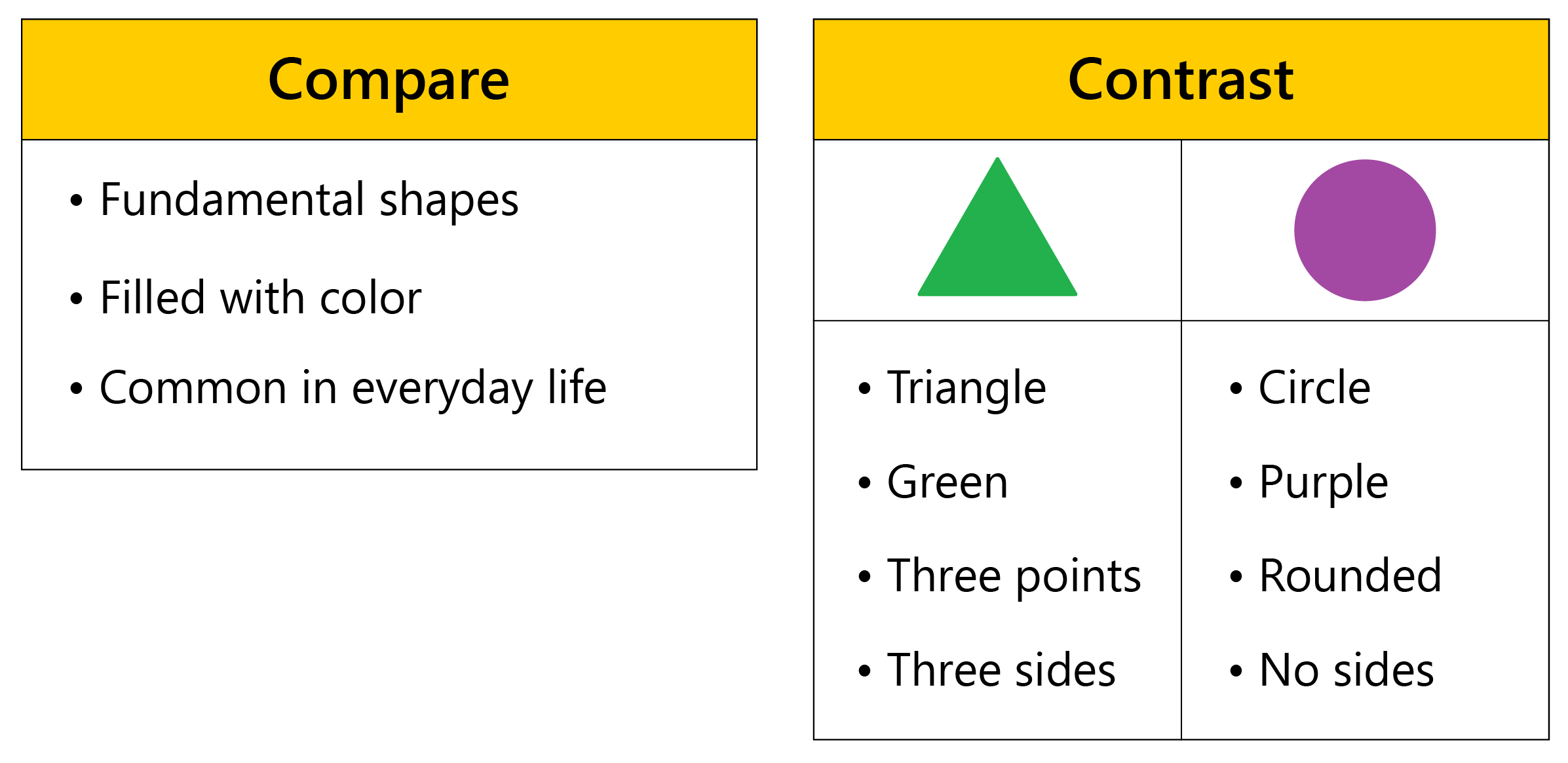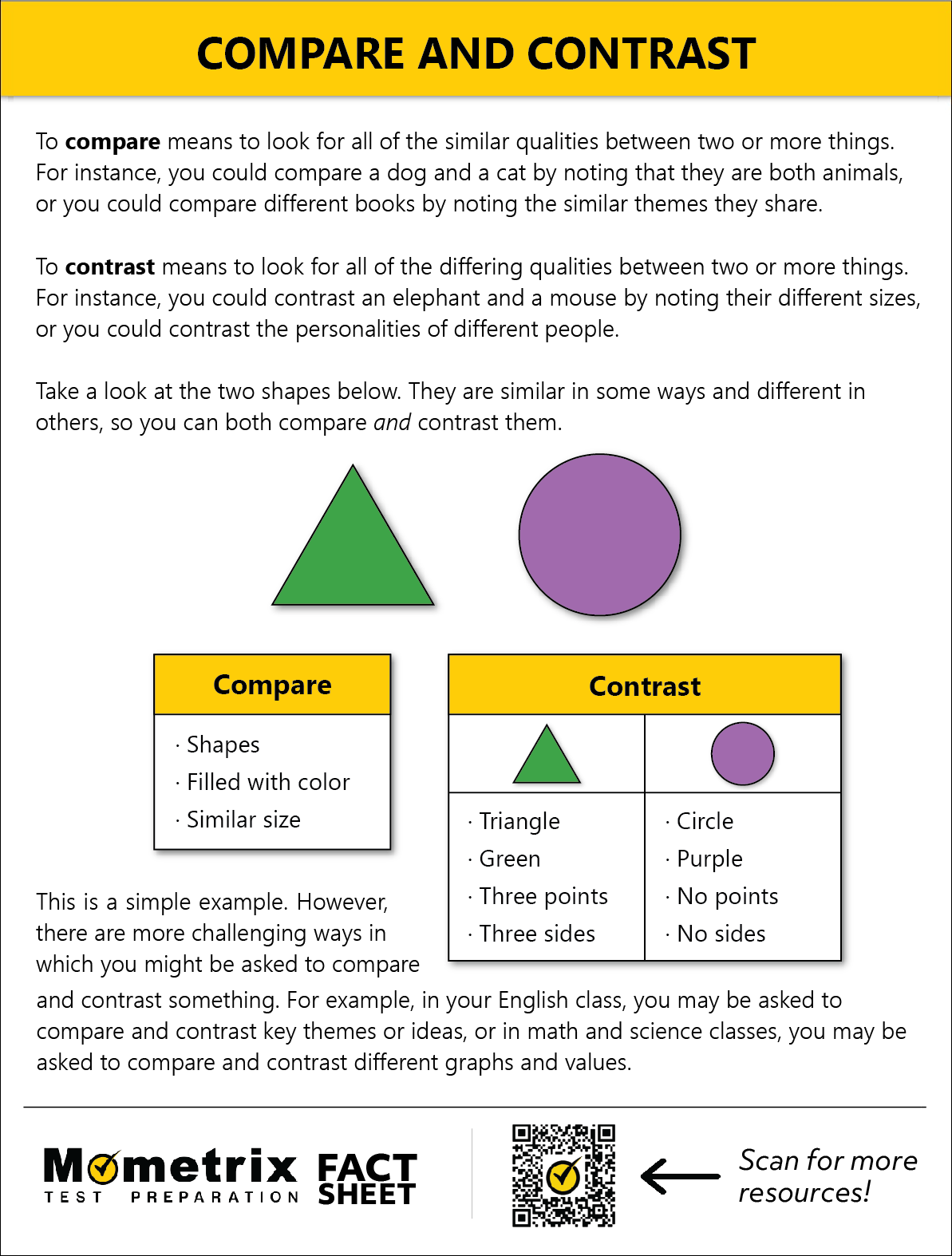
Hello, and welcome to this Mometrix video lesson on how to compare and contrast. What does it mean when you are given instructions to compare and contrast two or more things?
Compare
To compare means to look for all of the similar qualities between two or more things. Some examples might be comparing stories you’re reading in class for similar themes or ideas. You might also compare notes with a classmate to make sure you didn’t miss any information.
Contrast
To contrast, on the other hand, means to look for all of the differing qualities between objects. Someone might contrast original versions of movies with their remakes, or you might be asked to contrast different words. To do this, you might look at the spellings and meanings of those words. A great example of this is their, there, and they’re. Each of these words sounds the same, yet they are spelled differently and have different meanings; these are great words to contrast.
Best Practices
Before we look at our main example, we should go over best practices for how to compare and contrast objects and ideas.
When comparing and contrasting, you can’t go wrong with physically writing out a list for each item, side by side. Writing a list helps to keep information separated and to keep your ideas from getting jumbled. You could make your list by folding your paper in half and writing the qualities of one item on the left side, while writing the qualities of the other item on the right side. You could also create a chart, like you might in your math class, that neatly boxes in each topic and their qualities and separates everything into their respective categories.
Example
I think it’s time for an example. Together, let’s compare and contrast these two objects:


Now, this is a simple example. However, there are more challenging ways in which you might be asked to compare and contrast something. For example, in your English class, you’ll be asked to compare and contrast key themes or ideas expressed in the literature you’re reading. You might read works by multiple authors and then discuss how they are similar and/or different and how that might’ve lead to the development of the other authors’ works.
You might also be asked to compare and contrast words if the text has been translated from another language. Doing this can give a fuller meaning to the ideas trying to be conveyed in the text.
You might also be asked to compare and contrast in your math classes when looking at numbers or charts.
The bottom line is, you can and will use comparing and contrasting in multiple ways throughout your life!


